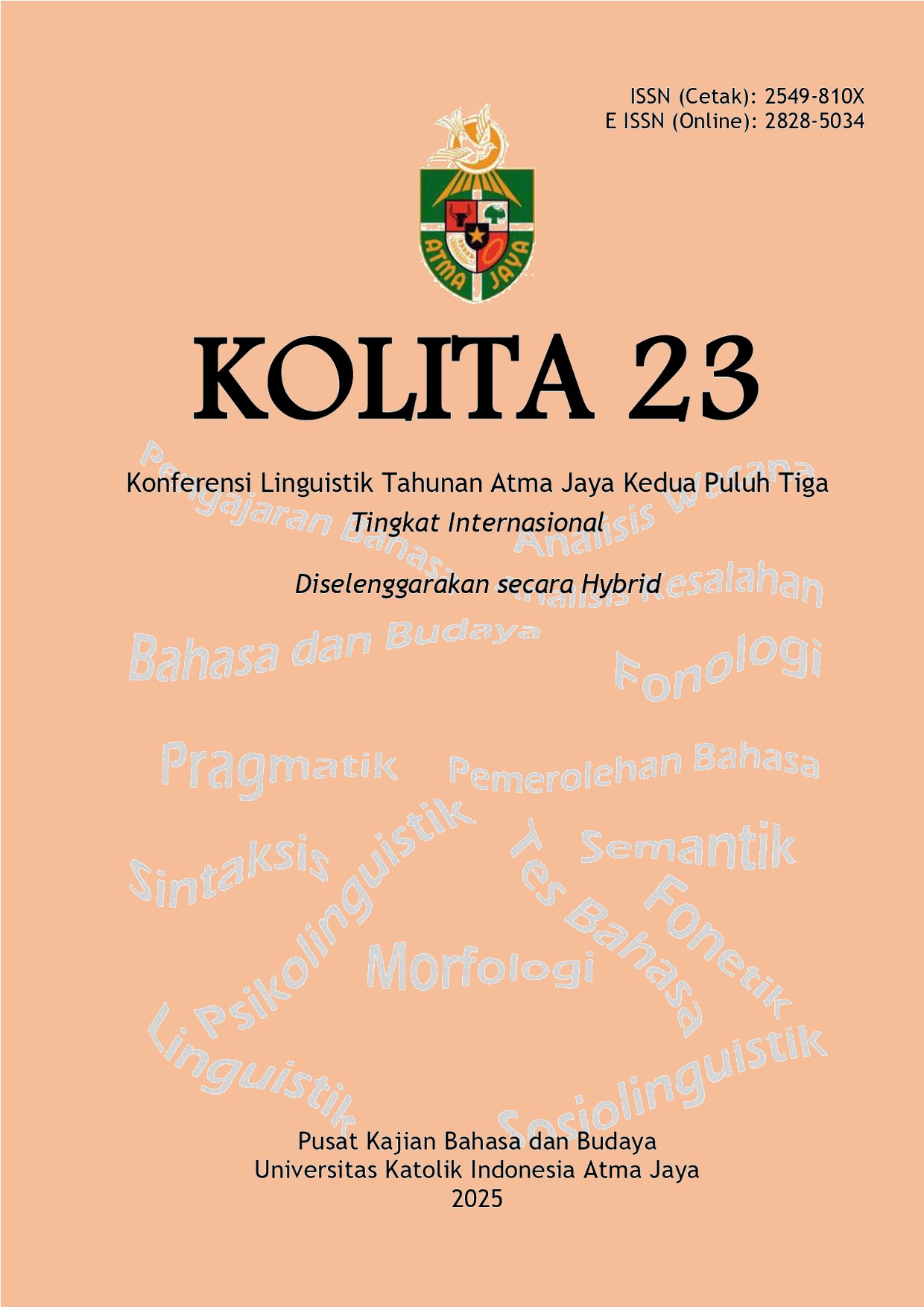LANGUAGE DYNAMICS AND DIGITAL IDENTITY: A STUDY OF THE VIRTUAL LINGUISTIC LANDSCAPE ON @TANYAKANRL
DOI:
https://doi.org/10.25170/kolita.v23i23.7150Kata Kunci:
Virtual Linguistic Landscape, Digital Identity, Slang, Code-Mixing, Social Media LinguisticsAbstrak
This study explores how language is used and identities are shaped in the digital space of @Tanyakanrl, a popular X (formerly Twitter) account, through the lens of the Virtual Linguistic Landscape (VLL) framework (Blommaert & Maly, 2015). Drawing on a descriptive qualitative approach, the research analyzes 100 purposively selected posts and their comment sections, gathered between January and March 2025, to ensure both linguistic and thematic relevance. The analysis distinguishes between top-down content posts authored by the account administrators and bottom-up content responses from users. It investigates how language variation, dominance, and symbolic as well as informational functions of linguistic elements operate across these two layers, following Landry and Bourhis’ (1997) typology of linguistic landscape functions. The findings suggest distinct patterns in how digital identities are performed (Page, 2012; Androutsopoulos, 2015). Admin-generated posts tend to use Indonesian in a formal or neutral register to maintain clarity and broad accessibility. However, the strategic use of slang and digital vernacular indicates a deliberate attempt to create familiarity and shared cultural reference with the audience—reflecting a negotiated identity between authority and relatability. In contrast, user-generated content frequently features informal language, code-mixing (particularly Indonesian-English), and youth slang. These linguistic choices signal an orientation toward in-group belonging and reflect the dynamics of youth digital culture (Tagg, 2015), where identity is co-constructed in interaction. Rather than serving only communicative purposes, these language practices act as discursive strategies for identity performance (Bucholtz & Hall, 2005) and alignment with peer communities. Humor, abbreviations, and evolving slang function as markers of belonging, emotional resonance, and cultural fluency within the online environment. The rapid innovation and spread of such terms on @Tanyakanrl also demonstrate how social media platforms serve as dynamic sites of language change and ideological reproduction (Blommaert, 2010), shaped by both local sensibilities and global digital trends. By mapping these patterns, this study positions @Tanyakanrl not merely as a space for entertainment or discussion, but as a sociolinguistic arena where language ideologies are enacted, social boundaries negotiated, and digital identities continually redefined. These insights contribute to the growing field of Virtual Linguistic Landscape research by showing how everyday digital interactions shape and reflect contemporary identity practices in multilingual, networked contexts.






